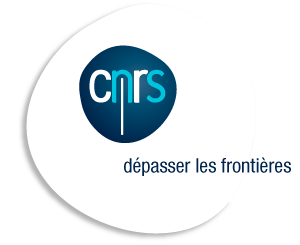We will post articles of topical interest as well as documents produced by the InterRidge Office which have been sent to decision makers.
23rd annual session of the International Seabed Authority
The 23rd annual session of the International Seabed Authority (ISA) has been held in Kingston, Jamaica (8-18 August). InterRidge, as observer, attended the Assembly and Council sessions. Below are summarized the main items of the Session with links to the referenced documents.
Council:
- Report on the status of contracts for exploration (ISBA/23/C/7).
- Report on laws, regulations and administrative measures adopted by sponsoring states and other members with respect to the activities in the Area (ISBA/23/C/6). Suggestion that the LTC drafts a model law in order to strengthen the role of the Authority as a regulatory body.
- Approbation of the application of Poland (ISBA/23/C/11) for polymetallic sulphides exploration on the Mid-Atlantic Ridge between the EEZ of Portugal and the exploration permit granted to France.
- Extension of India’s contract for polymetallic nodules exploration (ISBA/23/C/9).
- Report of the Legal and Technical Commission (ISBA/23/C/13) summarizing (among others) contractor compliance to their obligations.
- Draft exploitation regulations and a roadmap for the delivery of the draft regulations (ISBA/23/LTC/6). Member states and contractors were called to partner with the Secretariat on developing Environmental Management Plans (EMPs) in light of the exploitation regulations and the applications for exploration contracts.
Assembly:
- Annual Report of the Secretary-General (ISBA/23/A/2), followed by a long discussion. The need for development of draft exploitation regulations and for cooperation with relevant international organizations has been highlighted.
- Final report of the Article 154 Review Committee (ISA’s first periodic review) (ISBA/23/A/3), followed by a discussion on its 19 recommendations – including a review of the LTC’s working methods to cope with its increasing workload; the need to develop a strategic plan of ISA; and high-quality data management and sharing system. Several countries suggested to share environmental data collected by contractors during exploration.
The presence of InterRidge at the ISA session gave the opportunity to introduce IR activities in extending our knowledge on mid-ocean ridges (e.g. working groups and workshops), disseminating information (e.g., vent database), and developing capacity building (e.g., fellowships and cruise-bursaries). InterRidge expressed its readiness to collaborate with the ISA through our collective scientific expertise, to ensure a proper balance between sustainable development and protection of the marine environment.
InterRidge Industrial Liaison Panel
An InterRidge Liaison Panel for the formation of guidelines concerning exploration and exploitation of SMS deposits has been formed. It will liaise with mining interests and policy makers to engage all interested in the very topical issue of SMS deposits at hydrothermal vents. Follow the link above.
Hydrothermal vents survey 2010
In 2010, at the request of the ISA, the InterRidge Office surveyed the InterRidge community concerning hydrothermal vents that the community wished to be protected. In February 2011, the results of this survey were sent to the ISA, along with a supporting letter outlining the range of views that were received.
List of vents
Accompanying letter to Legal and Technical Commission
Letter to ISA (Jan 2011, in advance of submission)
Articles of interest:
Dinard Report: Environmental Management of Deep-Sea Chemosynthetic Ecosystems: Justification of and Considerations for a Spatially-Based Approach. ISA Technical Study: No. 9 (linked to ISA website)
"Tighten regulations on deep-sea mining" Nature article, Feb 2011, by Cindy Van Dover
Discovery of rare-earth elements
"Deep-sea mud contains high concentrations of rare-earth elements and yttrium at numerous sites throughout the eastern South and central North Pacific. We estimate that an area of just one square kilometre, surrounding one of the sampling sites, could provide one-fifth of the current annual world consumption of these elements. We show that rare-earth elements and yttrium are readily recovered from the mud by simple acid leaching, and suggest that deep-sea mud constitutes a highly promising huge resource for these elements" (from article in Nature GeoScience).
Articles of interest:
Deep-sea mud in the Pacific Ocean as a potential resource for rare-earth elements (Nature Geoscience)
Not so rare earths (Podcast)
A Gold Rush in the Abyss - New York Times, July 2012
Of further interest
SPC-EU Deep Sea Minerals Project
Marine Mining Environmental Code




